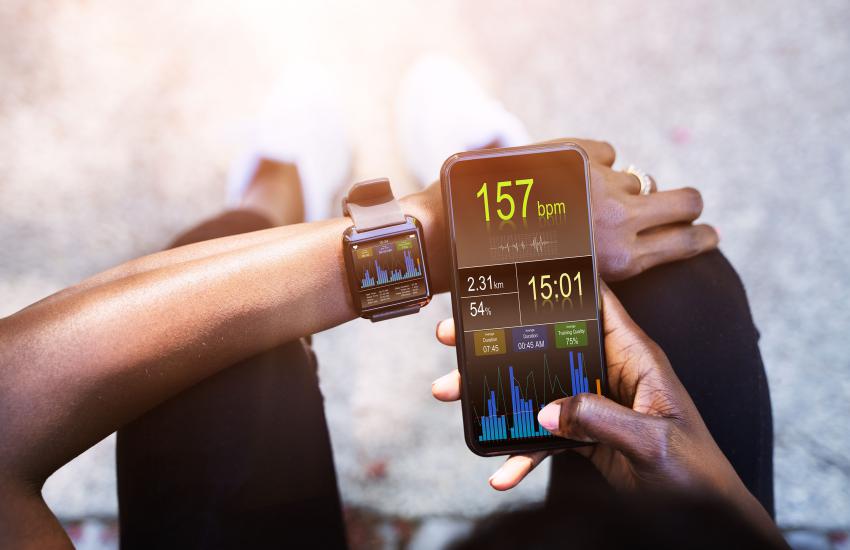SMART ePANTS May Be the Perfect Fit
Though there have been past attempts to create and utilize such technologies, the SMART ePANTS project’s program manager does not believe that an integrated solution to body-worn electronics currently exists. It is, however, extremely close to becoming a reality.
Dawson Cagle joined the Intelligence Advanced Research Projects Activity (IARPA) in 2017 after a lifelong experience of watching his Type-1 diabetic father monitor his own health five times a day. “I remember when cellphones first came out and the power of a portable computer became available in the palm of my hand. It occurred to me that that could help my dad in many different ways.” Following his own research, Cagle learned that individual components of a portable computer have all been developed as separate pieces. “The goal is to take all of those components and to convert them, to integrate them to a single device that you can wear.”
The intelligence community (IC), in particular, has shown growing interest in body-worn electronics, Cagle said. The SMART ePANTS program page explains that by “weaving devices directly into garments, the intelligence community staff will be able to record information from their environment hands-free, without the need to wear uncomfortable, bulky and rigid devices.” The innovation would improve the range of motion and response times in challenging circumstances while protecting U.S. safety.
Active smart textile research is at the root of in-demand modernization, as it involves fabrics designed to adapt and change functionality with changing environments and user input, the program summary explains. “Unlike passive smart textiles, which rely on their structure to function, ASTs employ energy to power built-in sensors and/or actuators that sense, store, interpret and/or react to information from their environment.”
The likes of Hollywood have made this desirable technology sound overly familiar; however, Cagle does not believe that anything of the kind currently exists worldwide. “There have been a few attempts … but because of the way the state of engineering is right now, everything ends up being isolated into some kind of a rigid puck,” he explained. Everyday devices, such as iPhones and Fitbits, though at a constant progression toward ease of usage, remain rigid and, in most cases, washer unsafe.
Cagle, who spent 10 years at the Department of Energy, is a battery expert and pointed out the biggest challenge for this project: batteries. “Anyone who is alive in the modern world understands battery life … we have been asking for more and more out of our phones,” Cagle stated. With an ask to put that same battery power into a much smaller package, the challenge grows. Big changes in temperature and stretching cause bending and heating of batteries, which is what makes them die. “So now I’m asking for a battery that can operate complex electronics and then be stretched and put in a washer.”
“Imagine a stretchable computer,” Cagle says. “People are much harder on their T-shirts than they are on their phones, right?” The risk of breakage and damage is high, which has been a significant challenge in all previous and current academic efforts. The goal is to create something just as comfortable as a regular clothing item—no rigid additions or batteries “hanging off your body.”
Proposers’ Day, which gave individual performers and applicants the opportunity to showcase their technologies, meet each other and form teams, was very successful, Cagle said. “People got a much clearer idea of the real goals of the program.” The hope is that companies and academic communities will collaborate to come up with the best possible solution to meet all needs. “In my experience, most of the successful proposers that come to our agency are a combination of companies and academics. I see that often.”
“Everyone assumed that we would be wearing our computers by now,” Cagle said, referring to academic publications for sports performance, as well as medical and military communities. The difficulty, however, has been integration. “The integration is just the next step in the final stage of the Internet of Things. We can finally start to have our computers, not handheld but be on our body. And I’m sure that will change how we use computers and the internet.”


Upon completion of lightning talks (which offer individuals a chance to briefly explain their research and invention) and reviewing all proposals, Cagle says the next step is compiling a list of recommendations for all applicants and discussing them with IARPA Director Catherine Marsh. Together, they finalize the list of selections until Marsh signs off on the authorized list. As soon as all have been contacted, the awardees are announced.
Though IARPA primarily works to help the IC face some of its most difficult challenges, the commercializing of a product proves a further success for the agency, Cagle said. “We don’t have the power to have sustained funding of an entire multibillion-dollar industry,” he explained while mentioning that the true goal is to help people think about the possible. “If we do that and it gets picked up by the commercial sector, we’ve done something right.” For example, the medical and sports industry would be exceptional candidates to use a technology like SMART ePANTS. Monitoring health and collecting data to improve performance is a highly sought-after need.
In its promising future, SMART ePANTS stands to revolutionize the Internet of Things and create opportunities and hope for those looking to help individuals and larger communities. “The ingenuity of the academic community in the United States and around the world is amazing,” Cagle optimistically stated.





Comments